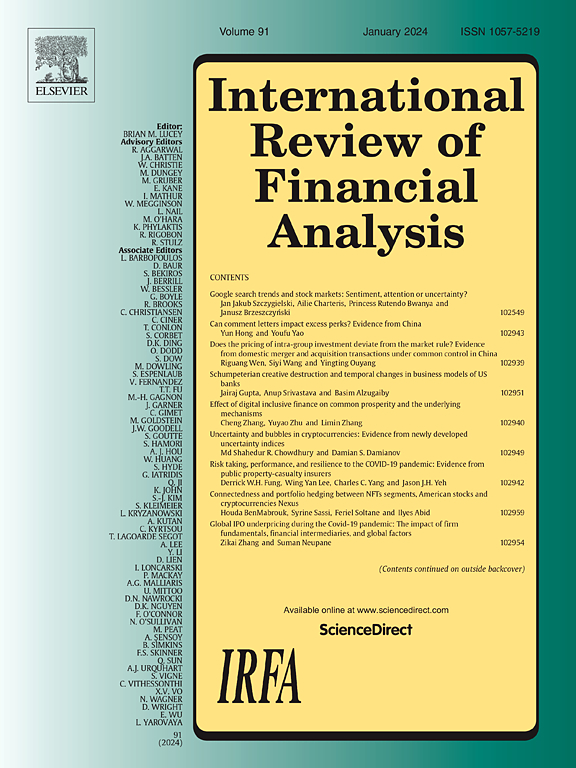What determines Bitcoin's price over the past decade?
IF 7.5
1区 经济学
Q1 BUSINESS, FINANCE
引用次数: 0
Abstract
We employ a novel three-stage analysis method of ICEEMDAN-Van der Waerden Test-Elastic Net to analyze Bitcoin's price. Our research aims to explain how Bitcoin's price has been formed at different phases of development over the past decade. We have segmented the daily closing price of Bitcoin from November 1, 2013, to December 31, 2023, into five phases, utilizing the ICEEMDAN method to decompose them into intrinsic mode functions, followed by the reconstruction of high-frequency, low-frequency, and trend curves using the Van der Waerden Test. With Elastic Net, we identify the top ten factors impacting the high-frequency, low-frequency, and trend curves during each phase. Our findings reveal a strong correlation between the high-frequency curve, investor sentiment, and daily transaction frequency in the Bitcoin market. The significant rises and falls in the low-frequency curve correspond to important events in the Bitcoin market or global political and economic occurrences. The trend curve is decisive in determining the long-term trajectory of Bitcoin's price. Over the long term, our analysis indicates that Bitcoin's price is influenced predominantly by macroeconomic fundamentals and market vitality. Bitcoin's price is evolving, shifting from focusing on its internal production factors to relying more on external macroeconomic factors. Of the major asset classes, Bitcoin's correlation with stocks has grown the most significantly. Due to Bitcoin's increasing market vitality and the decrease in Bitcoin's issuance speed changing the supply-demand dynamics, Bitcoin's price is on an upward trajectory in the long term. Furthermore, our findings provide insights into Bitcoin's speculative and safe-haven properties. Our work also facilitates more accurate predictions of Bitcoin's future prices.
求助全文
约1分钟内获得全文
求助全文
来源期刊

International Review of Financial Analysis
BUSINESS, FINANCE-
CiteScore
10.30
自引率
9.80%
发文量
366
期刊介绍:
The International Review of Financial Analysis (IRFA) is an impartial refereed journal designed to serve as a platform for high-quality financial research. It welcomes a diverse range of financial research topics and maintains an unbiased selection process. While not limited to U.S.-centric subjects, IRFA, as its title suggests, is open to valuable research contributions from around the world.
 求助内容:
求助内容: 应助结果提醒方式:
应助结果提醒方式:


